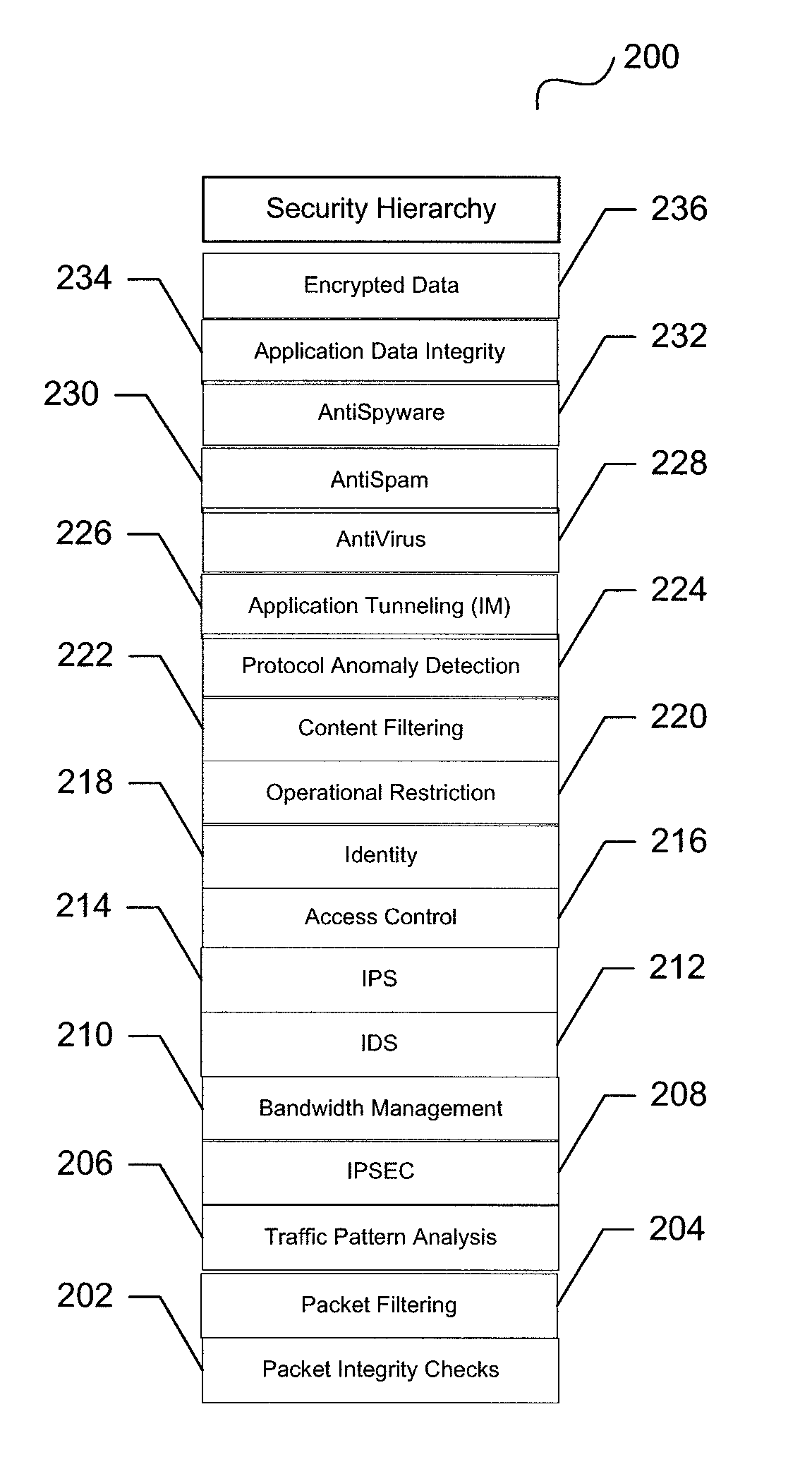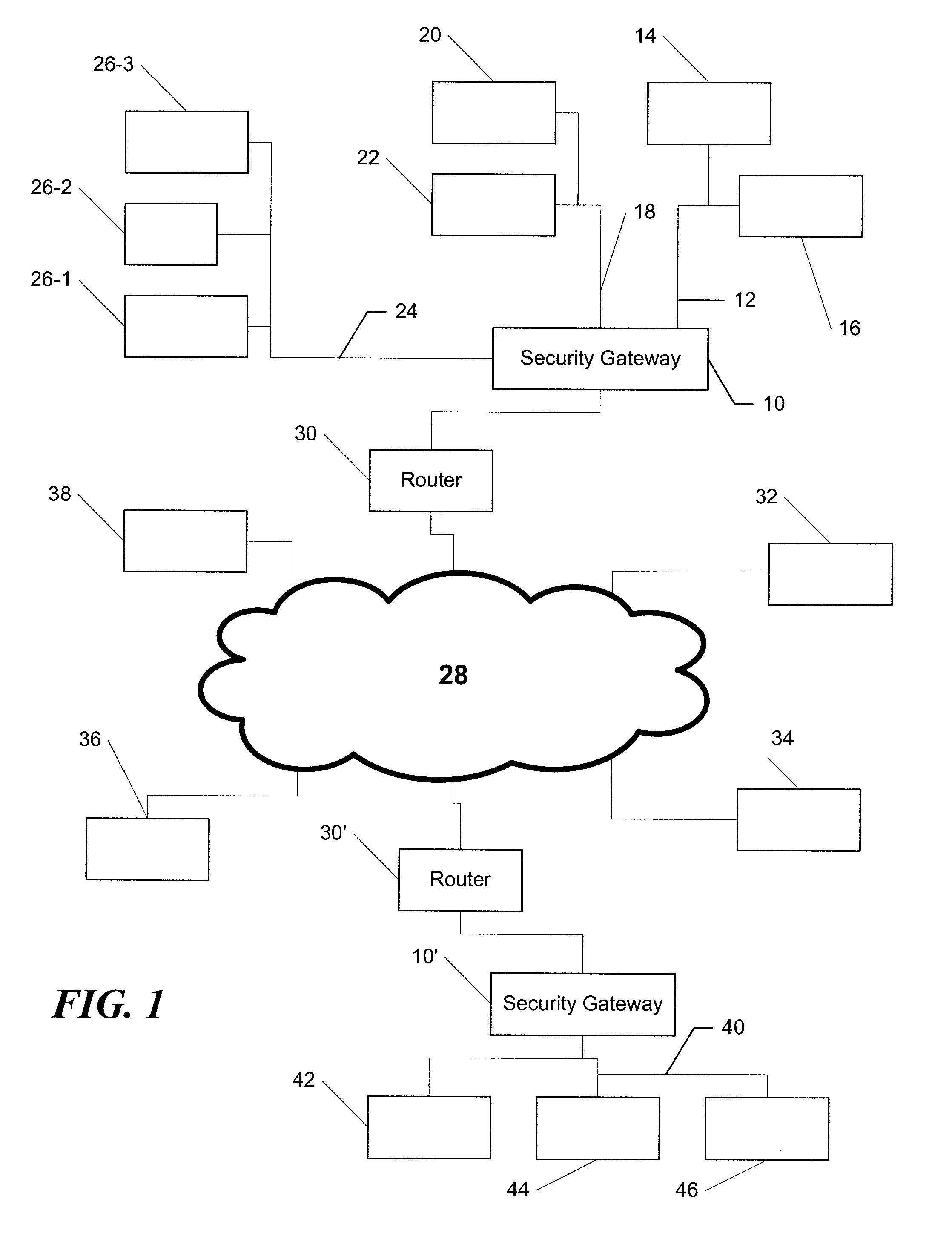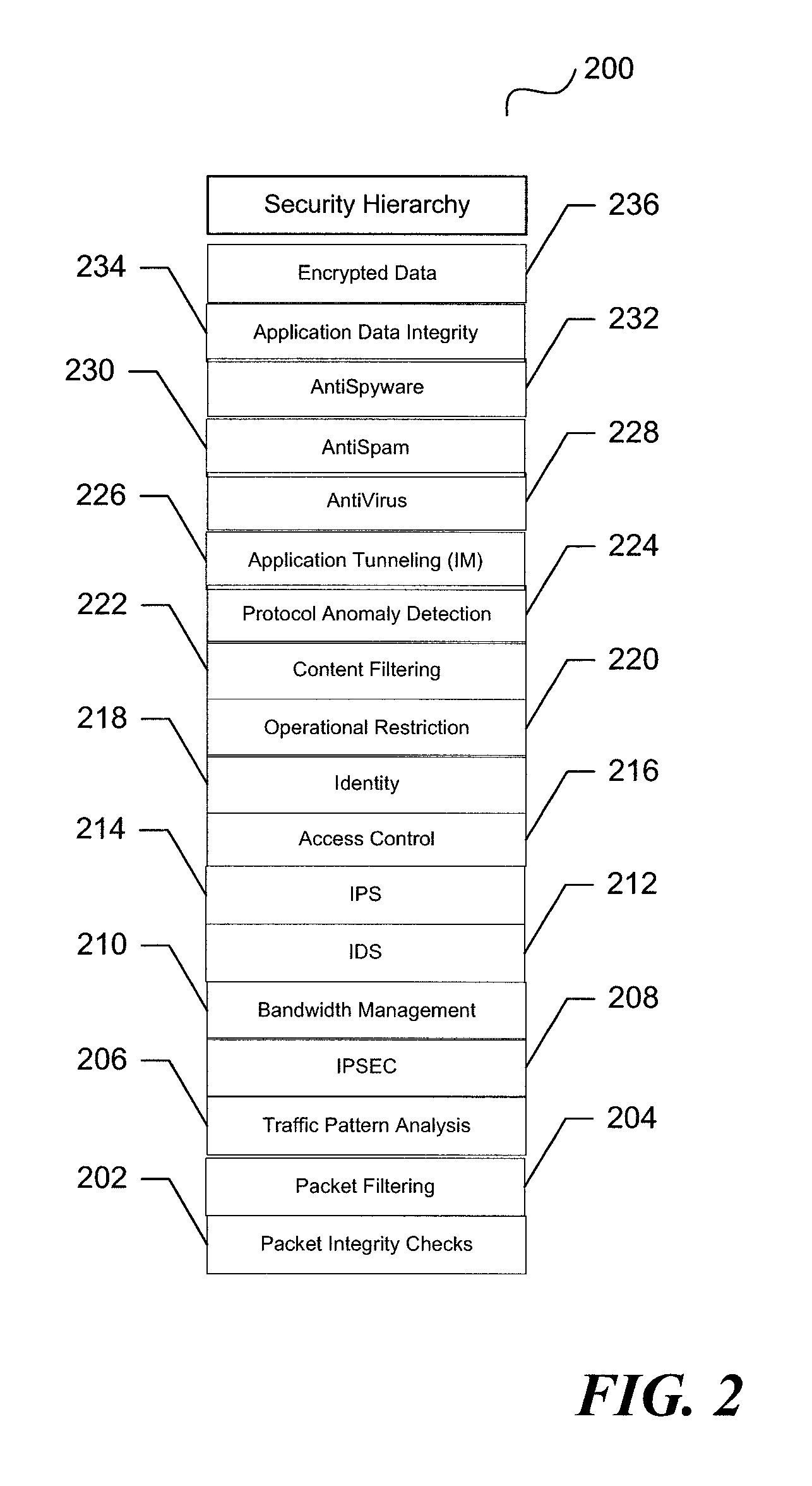System and method for unified threat management with a relational rules methodology
a threat management and relational rule technology, applied in the field of system and method for unified threat management with relational rule methodology, can solve the problems of complexity and redundancy, the “jumble” of separate programs or appliances, and the security of information technology (it) has become far more complex than preventing, so as to facilitate the authorization of packets or data streams through security gateway 10. the effect of easy integration
- Summary
- Abstract
- Description
- Claims
- Application Information
AI Technical Summary
Benefits of technology
Problems solved by technology
Method used
Image
Examples
Embodiment Construction
[0042]As described above, current UTM devices evolved from adding additional functions onto firewalls to leverage the processing capabilities. As new features were needed, the necessary module was “bolted” on. It is this approach of just “adding on” that has led to inefficient designs of current UTM implementations.
[0043]Current UTM implementations or devices use a disparate approach for security rules processing. This disparate approach is the result of legacy firewall implementations that are augmented with new security features. As a result, security checks are invoked at each decision point and the results are not shared among security features leading to a duplication of the checks and inefficient processing of rules. For example, a UTM implementation may check a source and destination address at multiple points in the security evaluation process to ascertain the same type of information. In addition, connection information is recorded at the device and network layers and propa...
PUM
 Login to View More
Login to View More Abstract
Description
Claims
Application Information
 Login to View More
Login to View More - R&D
- Intellectual Property
- Life Sciences
- Materials
- Tech Scout
- Unparalleled Data Quality
- Higher Quality Content
- 60% Fewer Hallucinations
Browse by: Latest US Patents, China's latest patents, Technical Efficacy Thesaurus, Application Domain, Technology Topic, Popular Technical Reports.
© 2025 PatSnap. All rights reserved.Legal|Privacy policy|Modern Slavery Act Transparency Statement|Sitemap|About US| Contact US: help@patsnap.com



